In Print: Hearing the Whale Song on Martha’s Vineyard
Originally posted on June 6, 2019 at 0:01 amEditor’s Note: This story first appeared in issue 209 of Dirt Rag Magazine. Like what you see? Subscribe now to catch issue 212, currently in the works.
The original run of this story neglected to mention some very helpful heroes who made this trip happen. They were mentioned in essence — the ferry was mentioned, for example, but not the ferry company — so this online version has those companies highlighted, and they are also listed in our Chewing the Fat section of issue 210: Martha’s Vineyard Chamber of Commerce made this trip possible, and apparently, there are many ferry companies traveling from Wood’s Hole to Martha’s Vineyard and the one that shuttled us was the Steamship Authority. Woods Hole Inn (a stone’s throw from the ferry station) in Woods Hole, Cape Cod, and Lambert’s Cove Inn in Vineyard Haven, Martha’s Vineyard, kept us warm and cozy and we would have frozen to death without them, or at least been arrested for illegal camping. We are a small, independent magazine and their generosity made this feature possible. Please check them out if you visit that area, both inns were so cozy and the ferry was comfortable, on time and had surprisingly good coffee (I mean, come on, it was on a boat!).
Words by Carolyne Whelan, photos by Brett Rothmeyer
It was a sunny morning on the Steamship Authority ferry from Woods Hole to the island of Martha’s Vineyard, Massachusetts. I grew up on the coast of Massachusetts, just south of Boston, and took the ferry into the city all the time with my folks until I was old enough to take the bus by myself. It was our photographer Brett’s first ferry, though, and if you’ve ever done something familiar with someone for whom it’s foreign, then you know that tingly feeling of pride, nostalgia and fresh perspective rolled into one warm ball. While he enjoyed photographing the passing scenery and the pretty cool concept of driving a car onto a boat, I was flooded with pleasant memories of heading to the dentist and the subsequent fancy glass-domed lunch with my mom or riding to the Boston Ice Cream Festival in the Commons with my dad. Once we landed and checked in at our bed-and-breakfast, Lambert’s Cove Inn, we rushed to our saddles immediately to make sure we caught the most of the nice weather and precious sunlight.

We spent the afternoon in search of trails we’d heard rumored by riders on Cape Cod, including New England Mountain Bike Association (NEMBA) honcho Bill Boles and Martha’s Vineyard Chamber of Commerce connection Bill DeSousa. The infuriating charm of Martha’s Vineyard is that it is not easily navigable for the unwitting visitor with only a smartphone and GPS to help show the way. MTB Project won’t help you here. Even the local app, TrailsMV, is of little help to mountain bikers in search of sick singletrack. The app will show you where a path lies, but it isn’t easy to navigate what is paved, doubletrack or singletrack. It won’t give you information on what is challenging, what is remote and what was built with families and accessibility in mind.

The best trails we found in Manuel F. Correllus State Forest weren’t visible on the TrailsMV app at all as of November 2018. Some were part of the disc-golf course, but a lot of them were secret paths through the forest that connected, webbed and dead-ended, got dissected by the sandy doubletrack forest roads or newly paved bike paths (which are on the app), and then restarted somewhere nearby. Some were deer paths while others were obvious singletrack or doubletrack. The terrain is sandy, especially in the southwest portion of the park, but closer to the center of the island, there were some semi-loamy trails to be found. Riding in this park was a game of cat and mouse with ourselves, searching for the good line among rutted service roads and piecemeal singletrack. It took me back to a time before mine, when mountain bikes weren’t a common addition to every man’s action fleet, when riders didn’t have apps and almost every ride was like a first ride. Which is to say like a first kiss: exciting but sloppy, nervous and self-conscious, trying hard to forget about our clumsy navigation and focus on how this is the thing we have been pining for, even if it isn’t quite as life-changing as we’d anticipated.
Other parks on the island offered a bit more diversity. Lobsterville, for example, was practically a theme park. And just like an amusement park roller coaster, it was over in less time than it took to get there. The tiny loop was worth it, though, taking us through bogs and up possibly the only hill on Martha’s Vineyard, with a good handful of rocks and roots to break up the sand, plus a half-dozen wooden bridges to guide over the bog, which undoubtedly became flooded shortly after we left and the rain hit. It was a very brief moment of being teleported to the Pacific Northwest, a tiny, ship-in-a-bottle scale of Whistler, British Columbia. (OK, that may be a bit hyperbolic, but it was still fun.)

Morrissey’s “Everyday Is Like Sunday” was my heartbeat, enveloping me like it was the very material of the fog Brett and I cut through along the shoreline of Aquinnah, Martha’s Vineyard’s sullen southern tip. We were told that Aquinnah was the serene part of Martha’s Vineyard, as if the rest of the island were an urban hellscape of constant noise, aggression and distraction. Still, watching the storm clouds slowly roll in from way off in the yonder abyss, covering the pastel sun as it took its sweet time setting, the inland ocean barely choppy and no humans in sight during this off-season, it was a meditation in landscape form. Our tires rolled over the semi-packed sand as the tide receded into the ocean. I picked up a dead jellyfish. I used to find jellyfish all the time when I was growing up nearby in a town called Hull, a peninsula 1 mile wide and 10 miles long that juts into Boston Harbor. Sometimes the washed-up jellyfish were still alive, or at least still had their tentacles and soft jelly outer layer. This was just the mesoglea, the firm disk that gives jellyfish shape — a jellyfish skeleton. I tossed it into the sea as a wave crept toward us, a pirate’s burial. Brett and I played around for a while longer on our bikes, cruising through the sand as the sky turned evermore grey without ever succumbing to darkness. It was only about 4 p.m. We hopped over some big rocks and tooled over big washes of pebbles and stones, but mainly watched the ducks and seagulls bobbing in a line just past the beach.
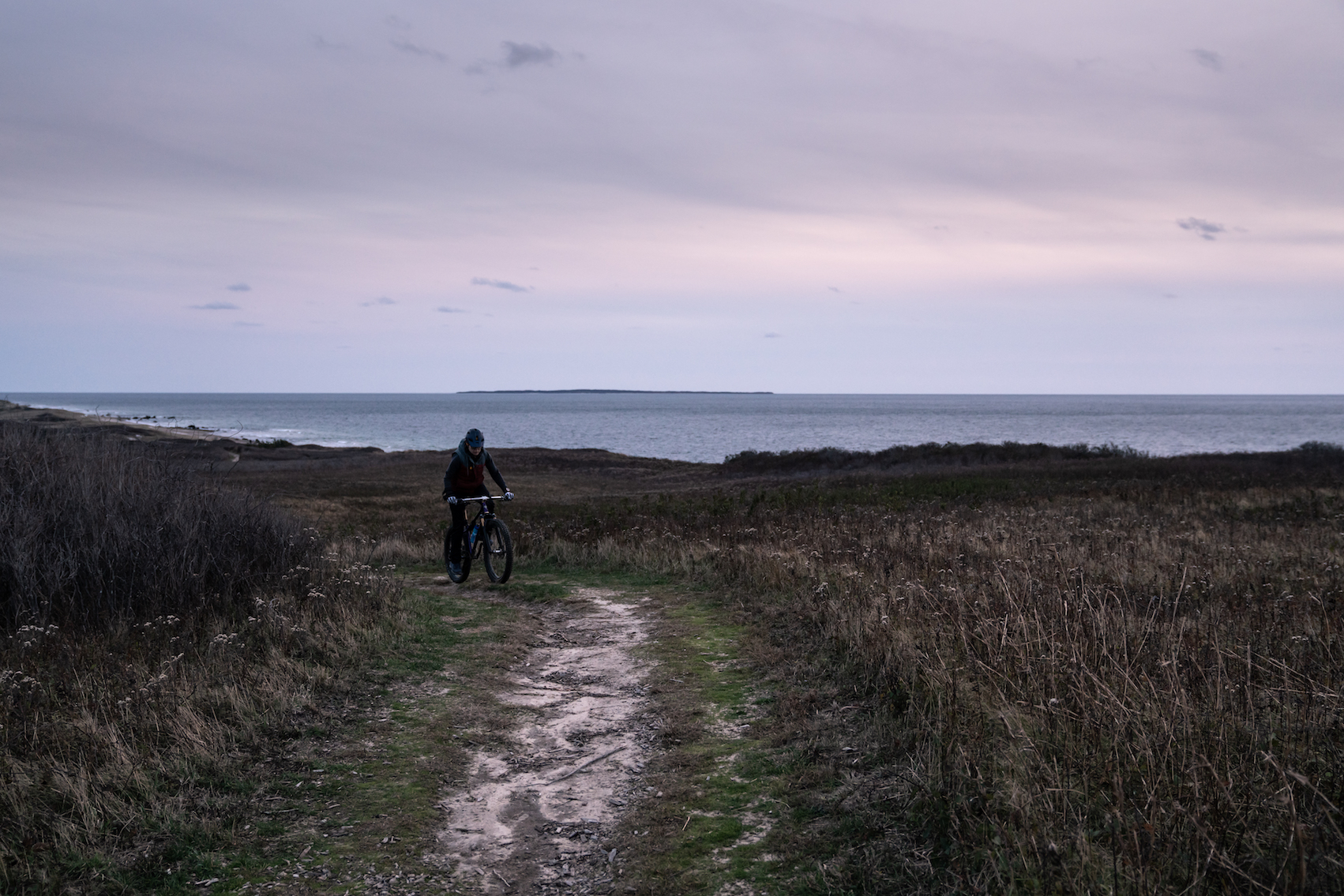
This is the reason I travel in the off-season. In addition to the discounted flights and motel rooms, there’s room on the ferry, elbow room at the bar and no wait at restaurants. It’s quiet. On Martha’s Vineyard, that’s most evident. I went to high school in a Colonial-era shore town called Hingham, 9 miles south of Boston. The more-affluent families had summer homes on Martha’s Vineyard and would come back from vacation with Black Dog crewneck sweatshirts and fresh freckles from spending the long days on their sailboats. From just my town alone, I imagine the island is completely swamped during the summer months. Walking on this quiet, secluded beach, the wet and hard-packed sand vacant of footprints, it was hard to imagine this place completely swarmed with seasonal residents and tourists. Where would they all fit, between the vastness of the ocean that is always taking and giving space, the beach ever expanding and shrinking with the tide, and all the dreams that have to fit between the granules of sand, the memories and favorite songs and of course all the birds and jellyfish and crabs that all take up their respective space? Where would all those blankets spread out?
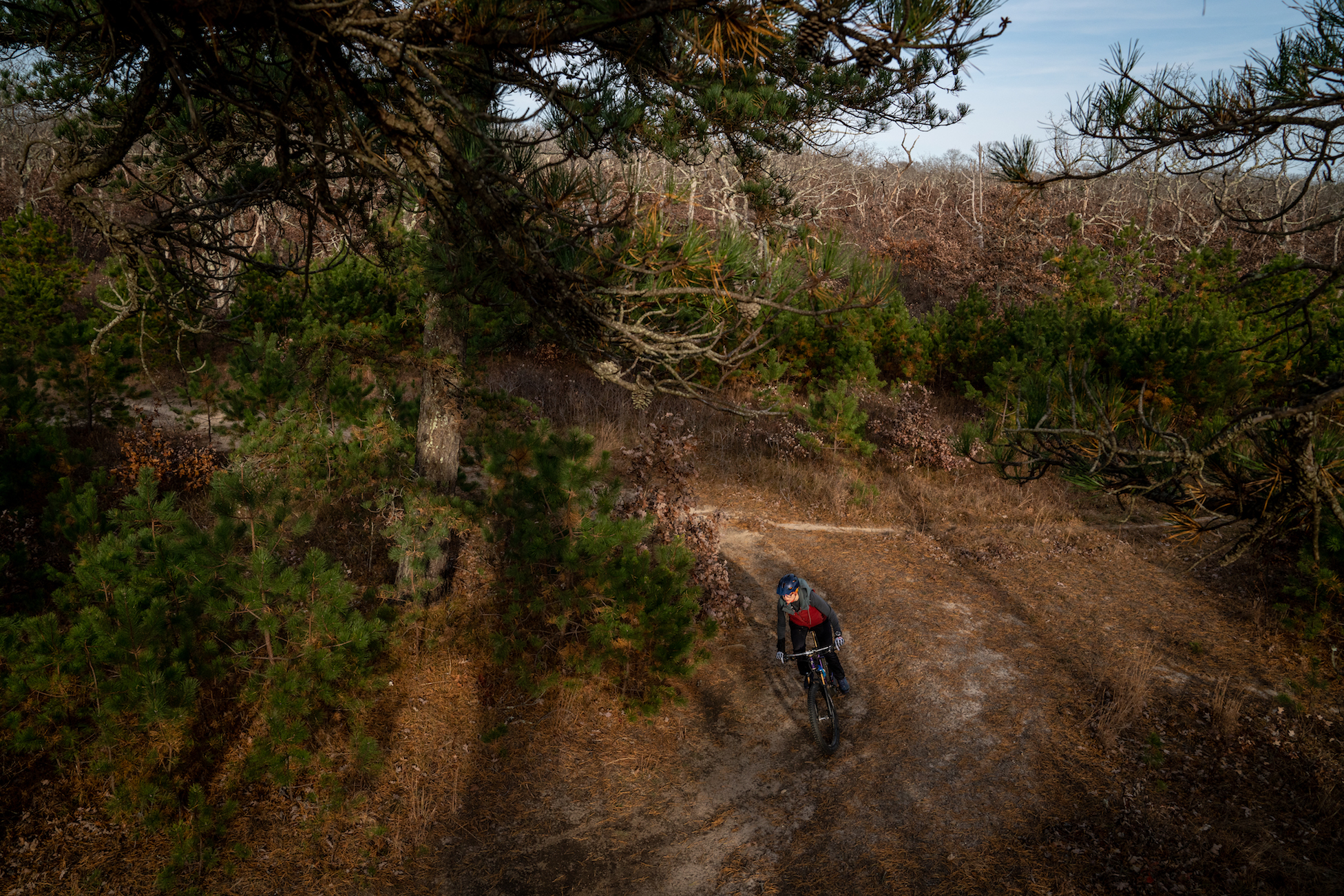
Good thing Martha’s Vineyard has so much beachfront. Unfortunately, much of that is privatized. With everyone gone for the winter, Brett and I snuck onto a few private decks, weaving between the tide and the fence posts that reached out into the ocean, to get better views of lighthouses or whatever else it was that piqued our interest. The tide came in and the rain came down, washing away any trace of our trespass.
Elsewhere along the quiet island roads, little paths popped up everywhere. Similar to the state forest, they never seemed to go far, but they did go. At first we tried to play by the rules we knew, finding a trailhead and checking a map. We drove for a while on what looked paved on the smartphone app but was little more than an old jeep trail; eventually we got to a trailhead with a few parking spaces and a trail map. The trail itself rose up and down some steep pitches and got twisty between trees. The heavy leaf cover on the trail was almost like riding through a slippery sand pit; it covered up a lot of the smaller rocks and roots, but just added to the mystique of the area. It was over soon, though, petering out on a quiet street. After that, we stopped trusting maps or actively searching out specific trails and instead stopped to check out whatever we saw from the road. In November on Martha’s Vineyard, there is rarely a car behind you to honk when you stop suddenly or pull over to check out something in the woods.
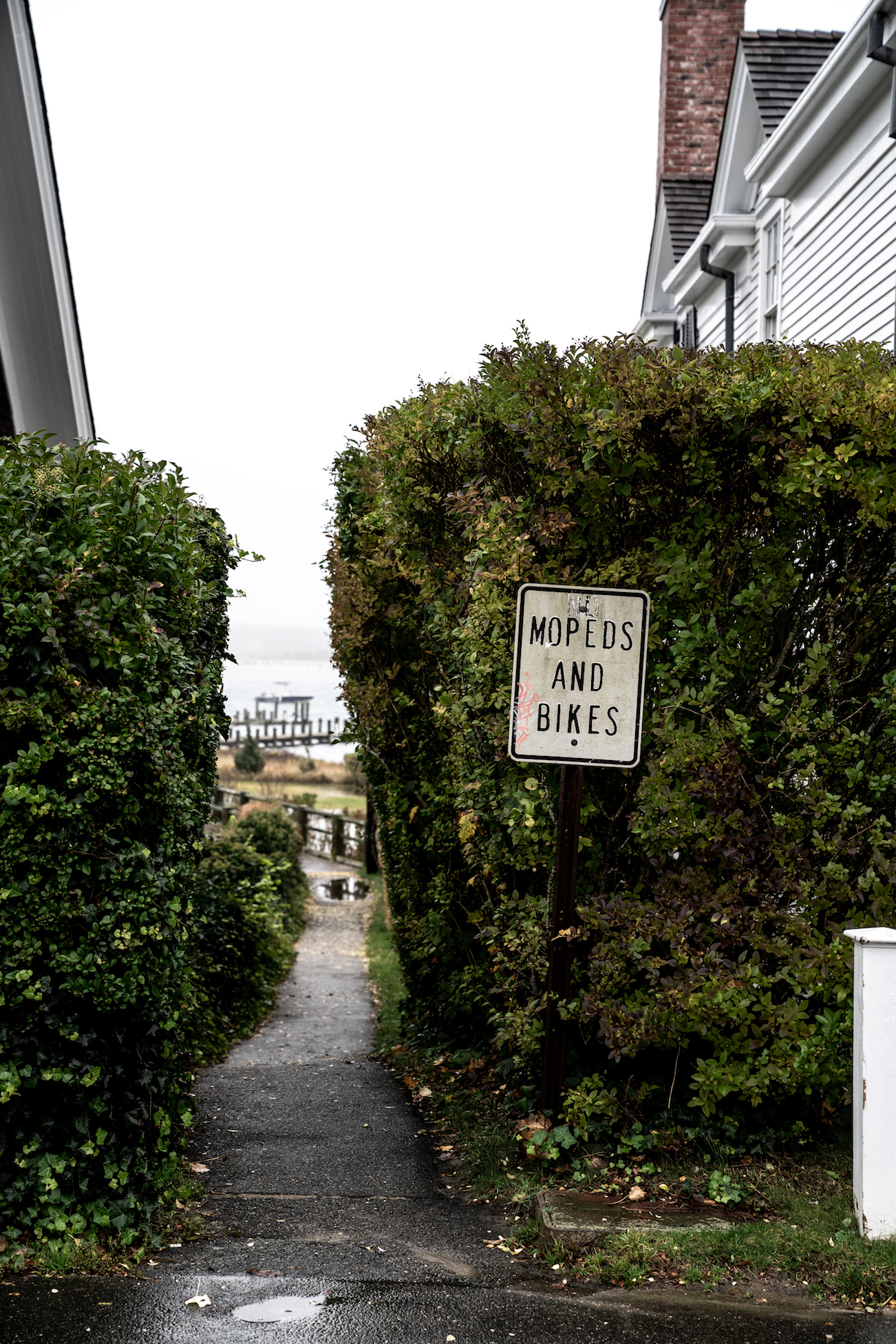
Many of these trails are part of the Martha’s Vineyard Land Bank Commission. It started in 1986 in response to a steady decline of active farms and a noticeable increase of privatized, fenced-off land that caused the open space to knot into vines and shrubs. Looking at their map of sporadic parcels and considering the land’s history, it makes sense why so many trails seem to start and stop abruptly. While this isn’t the most helpful for getting in a hard workout, it’s certainly pleasant for a remote island vacation.
In general, Martha’s Vineyard’s trails are flat and sandy, regardless of where on the island you ride, but that doesn’t make them any less fun. Especially in the off-season, when sunlight is at a minimum and trail conditions are likely to be either wet or snowy/icy, these trails seem ideal for packing a thermos of hot cider and heading out for a day of exploration of some of the most pristine and serene beaches and marshes around. If you’d like to ride with a guide or group, check out the Vineyard Off-Road Bicycle Association (VORBA), which coincidentally was started the same year Dirt Rag was: 1989. Happy 30th birthday, VORBA! They meet at Grange Hall in West Tisbury every Sunday morning at 9 and take off shortly thereafter. This is a no-drop ride and an experienced rider would be fine on a hardtail, fully rigid or even a ’cross bike.
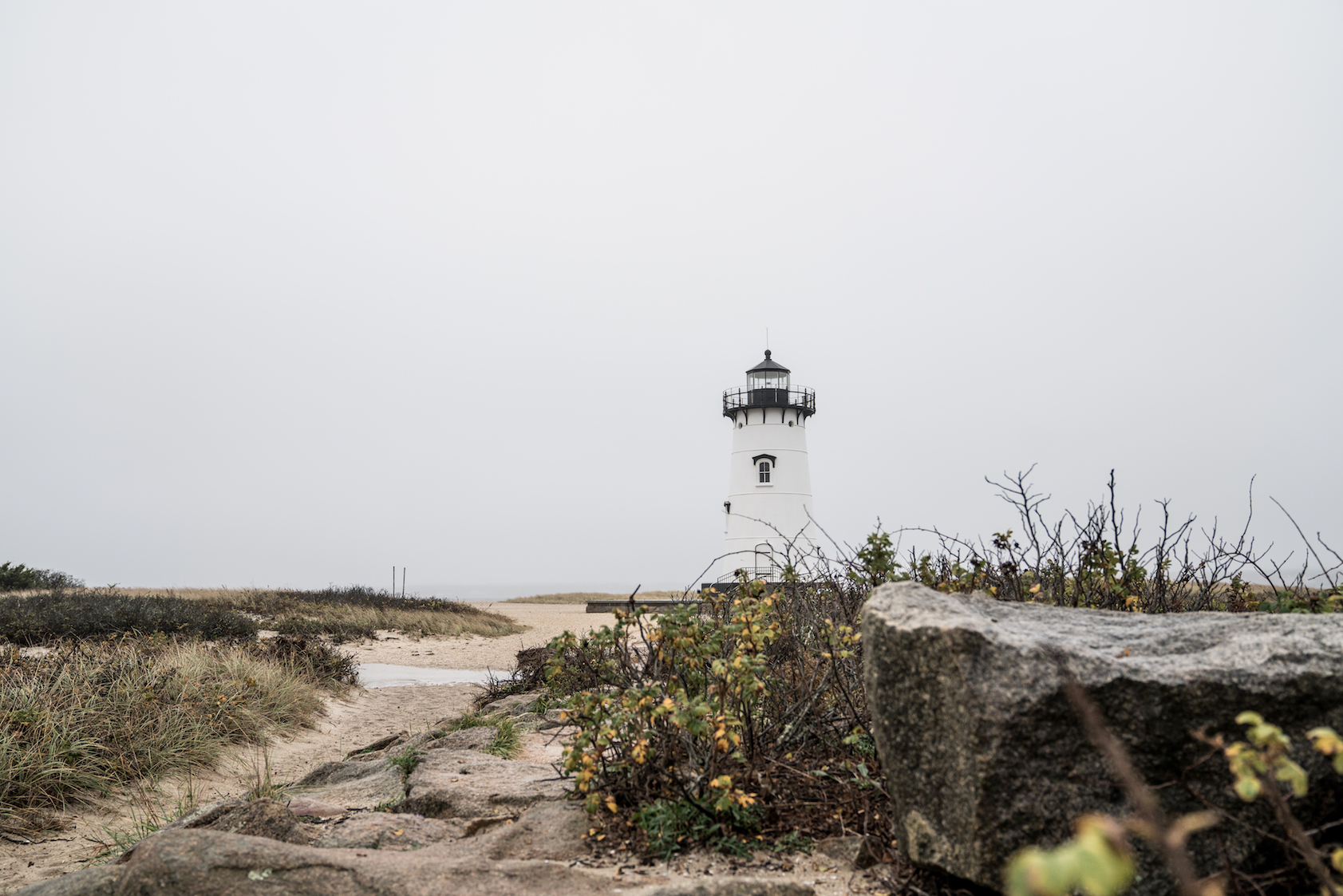
While the trails aren’t all that diverse, the flora is somewhat of a wonder. In the colder months, you won’t catch the cherry blossoms or magnolia buds coming into pale bloom. The maples, dogwoods and Virginia creeper will provide a great bouquet of color if you arrive early enough in the autumn. Otherwise, if you’re a proper nerd like I am, you will still appreciate the skeletons of white, black and red oaks, many of them eerily stunted like some Tim Burton scenery, probably from taking root in sand. Elsewhere, copper beeches and Chinese pagodas are hundreds of years old, with huge trunks and mangled branches reaching out across paths and streets.
GETTING THERE
If you are heading to Martha’s Vineyard, make sure you call ahead to reserve a spot on the ferry. As mentioned above, we partnered with Steamship Authority to get us across the waters, though there are ferry companies aplenty. If you plan, you can take your vehicle, but even in the cold months, the ferry can fill up with cars. There are a lot of departure options for ferries, including New York City, New Jersey, Rhode Island and various spots along the Massachusetts coast, so you don’t necessarily have to drive too far to get moving. While it may sound cold hanging out on the deck of the ferry in the winter (and it is!), watching the port pull away and the ocean fill in the surrounding landscape provides a magical, almost romantic introduction to this dreamy, quiet island. Plus, Steamship Authority sells pretty decent coffee inside and there’s plenty of seating, so you can go back and forth to keep your fingers from falling off.
LODGING
Once on the island, you’ll have plenty of options for sleeping indoors. There’s only one official camping spot, Martha’s Vineyard Family Campground, and they close Oct. 15, so for winter camping, you’ll either have to be incredibly stealthy or know someone with a backyard. Due to the intense rains forecast for our second day on the island, we were more than happy to accept accommodations at Lambert’s Cove Inn in West Tisbury, arranged through the Cape Cod Chamber of Commerce. Dirt Rag staffers are pretty dirtbaggy, so this bed-and-breakfast situated in a renovated farmhouse was an incredible treat considering the initial plan was to go bikepacking along these sandy trails and find someplace to sneak a camping site on the beach. This place is a gorgeous reprieve from daily stresses. The beds were incredibly comfortable, and after a day riding bikes in the sand, and another day walking around the beaches and pubs in the rain, sinking into the giant bathtub was a perfect final destination for the evening before crashing for the night. The fresh-baked chocolate-chip cookies they left out in the afternoon were a welcome treat to help replenish the calories we burned tail-whipping in the sand, and the light breakfast of warm scones and muffins got us ready for another day of wandering. There’s a restaurant on site, but it’s closed after Columbus Day, so if you plan on making this your home base, bring some snacks to keep in the room fridge. If you arrive at Martha’s Vineyard sans vehicle and don’t want to rely exclusively on your mountain bike for getting around, Lambert’s Cove Inn has e-bikes for rent that will be enough to get you all around the island’s six towns.

FOOD & DRINK
While Martha’s Vineyard technically has six towns, it can be thought of in two districts. Up-island is the rural western half of the island, where Lambert’s Cove is and where we did a lot of our riding outside the state forest. Down-island is the eastern half, where more amenities can be found. The terms “up-island” and “down-island” come from Martha’s Vineyard’s nautical roots, in which “up” takes you west and farther away from Greenwich, England, home of the Prime Meridian. This will mean nothing to you in terms of navigating this small plot of land popping out into the fringes of the Atlantic, but it’s a cool way to think about navigation in general and another way to be reminded of the atavistically brutal whaling heritage of the island and the world in general.
A lot of the businesses will be closed in the winter months, but the staples can be easily acquired. Gas stations, liquor stores, convenience stores, a couple of bars and the organic grocer were all electric with activity from the locals who stick around all year and the tourists like us who visit for the quietude of a winter vacation, but still want snacks and something to pour into our bathtub tea. Dining options are limited, even in bustling down-island, but you’re not out of luck. Lookout Tavern in Oak Bluffs has a wide spread of pub grub, classic New England seafood dishes and sushi. Down the street, Offshore Ale is another solid food option, with great salads. They are really trying to capitalize on the sports-bar pirate vibe, with free peanuts on the table and the executive order to throw the shells on the floor. For an afternoon pint in nearby Edgartown, stop by The Newes From America for a solid selection of local beers.
NEARBY

While part of the beauty of visiting an island is its detached remoteness, an undeniable plus for Martha’s Vineyard is its proximity to so many bustling areas while still maintaining an almost otherworldly vibe of seafarers and weathered lighthouses. Since you’re only a short boat trip away, it’s worth it to check out Woods Hole, a small town on Cape Cod. The Cape is kind of a pain to get to; once you’re there, though, the mountain biking is fantastic, the vibe is lively and most of the businesses are open year round. It’s not going to give you the island-getaway experience, but it’s still a nice stopover or a good entryway onto the island itself. This time of year in Massachusetts, daylight is a sacred, fleeting gift and it’s best to get used to trails as they feel and look in darkness. We headed out to Beebe Woods and Peterson Farm, in the southern part of Falmouth just outside the port town of Woods Hole, while there was still light in the sky, albeit a dim grey one. These trails, like the ones on Martha’s Vineyard, aren’t on MTB Project, but they are more easily found on the NEMBA site than the Martha’s Vineyard trails were. Still, it took us a few tries to find the correct trailhead. Similar to Martha’s Vineyard, there are a bunch of options, but they’re not all created equal. We still got to where we wanted to ride, near the Highfield Hall and Gardens. While these trails are supreme for night riding due to their good balance of easy and moderate terrain with just enough difficult/technical sections to keep it interesting, it’s worth it to head here early enough to check out the sheep at the adjacent Peterson Farm. Plus, it’s such a serene area that while these trails are navigable with headlamps, they are best experienced at a leisurely pace, enjoying the ponds, fields and forest all around you. Once the sun sets, however, these trails are relative rippers, with little risk of supreme injury as long as you pay attention when you’re going around the lake. Lakeside provides some interesting rock-root combinations, paired with tight cornering and short whoop-dee climbs with drops that could take you into the lake if you’re not careful. Otherwise, these trails are fairly wide, relatively clean of obstacles and feature zero exposure.

We stayed at the Woods Hole Inn, a great bed-and-breakfast around the corner from the ferry depot. The breakfast here was great and the rooms were incredible; mine had its own living room, a fireplace and an extra cot. With the size of the cot, bed and couch, this room could sleep a crew of five to six mountain bikers pretty easily, depending on how well they knew each other. The breakfast was home cooked and delicious; there were plenty of baked goods as well as coffee provided by the café next door. Also in town worth checking out is the bakery Pie in the Sky as well as the waterfront bar Quicks Hole, which has a good variety of dinner options.
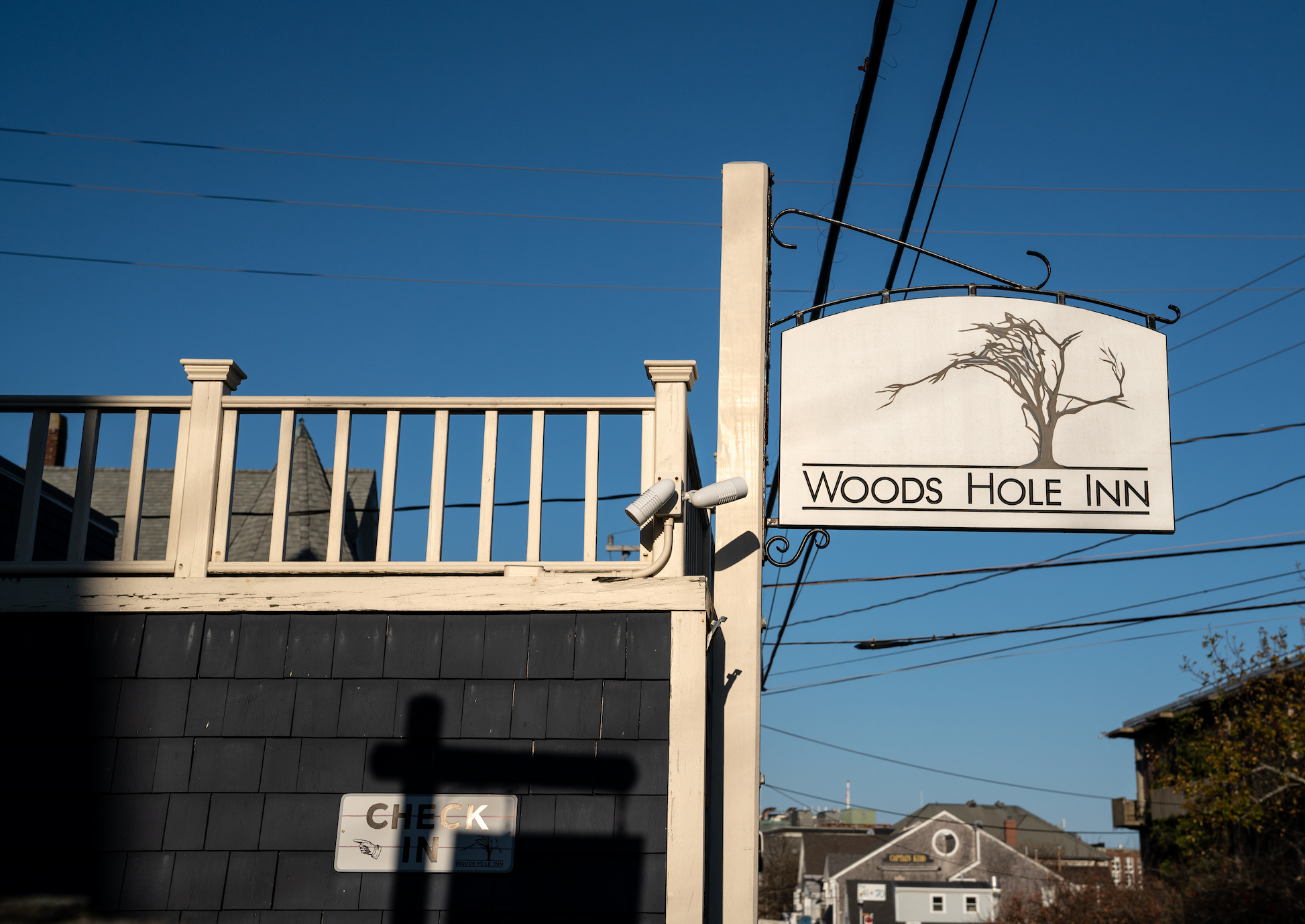
Growing up, we had a little statue of a harpooneer that intrigued and terrified me with his white, grisled face, yellow rain slicker, striped sailor shirt and, of course, the harpoon, positioned as if he was just about to hurl it at a 6-year-old’s eye. It was so cool, but also terrifying. Paired with my masochistic love of Moby Dick (I read it annually) and true love of whales, the Whaling Museum in Nantucket is a dreamy getaway if being on Martha’s Vineyard just doesn’t feel remote enough. Nantucket doesn’t have much in the way of mountain biking options, though, so be prepared to do your riding mainly between the ferry and the museum. There’s also a whaling museum in New Bedford, Massachusetts, which has a huge whale skeleton in the museum’s foyer, and it just gets cooler from there. New Bedford also has some incredible Portuguese food from the locals’ deep heritage of whalers from that area.
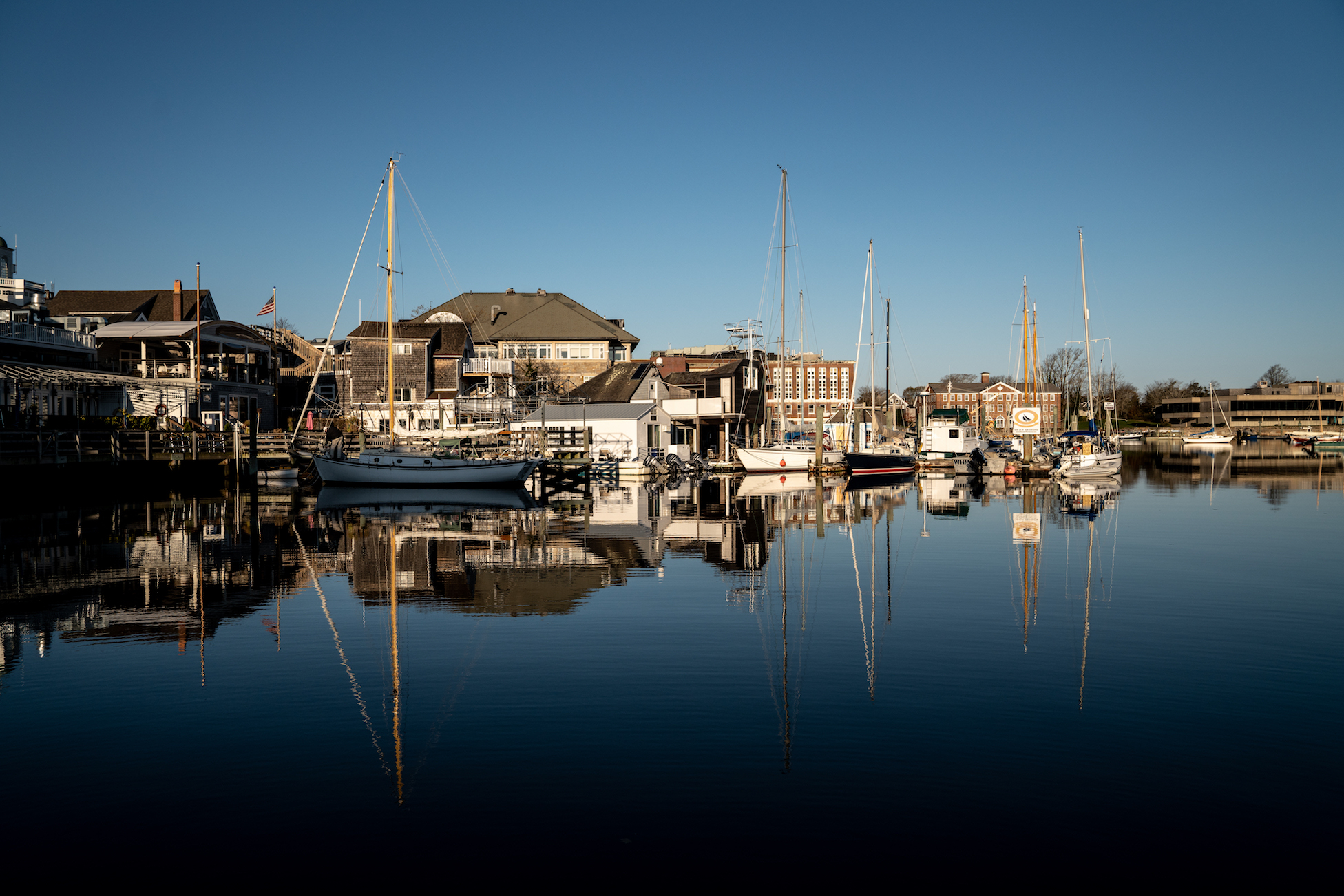
You may as well just take off the whole winter and give into the frigid bliss of coastal Massachusetts. Start with Martha’s Vineyard, get your tires stuck in the sand and, rather than fight it, appreciate the sea breeze on your face and the cold sand in your socks. Find your way to a warm pub with a fire going in the hearth (most of the ones open all year have a working fireplace) and see where the season takes you.